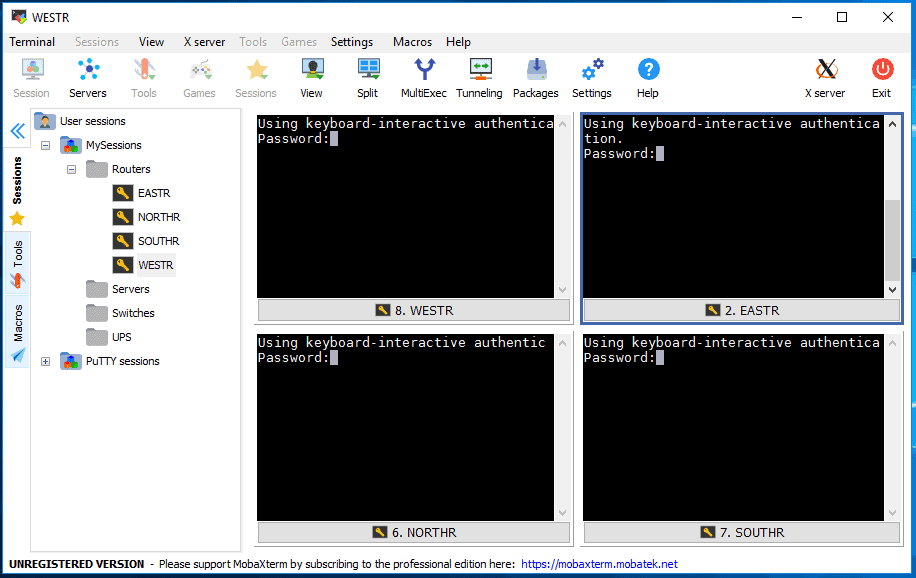

- VISIONAPP REMOTE DESKTOP COMMAND LINE WINDOWS 10
- VISIONAPP REMOTE DESKTOP COMMAND LINE PRO
- VISIONAPP REMOTE DESKTOP COMMAND LINE PC
- VISIONAPP REMOTE DESKTOP COMMAND LINE WINDOWS 7
- VISIONAPP REMOTE DESKTOP COMMAND LINE WINDOWS
SERVER:servername The server to be queried (default is current). Sessionid Identifies the session with ID sessionid. Sessionname Identifies the session named sessionname. SET PATH = %PATH% C:WindowsSystem32DLLCache ĭisplay information about users logged on to the system. To do this, in command prompt, type the following.
VISIONAPP REMOTE DESKTOP COMMAND LINE WINDOWS
NOTE: if you are using Windows XP, you need to add this location into your System path: C:WindowsSystem32DLLCache. This will list the sessions of the remote server (or local machine). QUser command comes with all the latest Windows clients and servers. To query and list the sessions on the remote session, you could use QUser.exe or QWinsta 1. Query the Remote Server for Current Terminal Sessions There are easy ways if you love command line based tools. Usually Windows Administrators, open "Terminal Services Manager" (in Administrative tools), connect to the problematic server and log off the unwanted sessions. ("Remote Desktop Disconnected", "This computer can’t connect to the remote computer") There are situations, you can’t connect to the server via remote desktop because of two sessions already active. In Windows servers, only two remote desktop sessions allowed with administrative access. noConsentPrompt - Allows shadowing without user consent.This trick I learned from my one of ex-college. control - Allows control of the session when shadowing.

shadow: - Specifies the ID of the session to shadow. prompt - Prompts you for your credentials when you connect to the remote PC.
VISIONAPP REMOTE DESKTOP COMMAND LINE PC
Unlike Restricted Administration mode, Remote Guard also supports connections made from the remote PC by redirecting all requests back to your device. Remote Guard prevents credentials from being sent to the remote PC, which can help protect your credentials if you connect to a remote PC that has been compromised. remoteGuard - Connects your device to a remote device using Remote Guard. However, connections made from the remote PC might not be authenticated by other PCs, which might impact application functionality and compatibility.

In this mode, credentials won't be sent to the remote PC, which can protect you if you connect to a PC that has been compromised. restrictedAdmin - Connects you to the remote PC in Restricted Administration mode. multimon - Configures the Remote Desktop Services session monitor layout to be identical to the current client-side configuration. To span across monitors, the monitors must be arranged to form a rectangle. span - Matches the remote desktop width and height with the local virtual desktop, spanning across multiple monitors, if necessary. public - Runs Remote Desktop in public mode. h: - Specifies the height of the Remote Desktop window. w: - Specifies the width of the Remote Desktop window. f - Starts Remote Desktop in full-screen mode. admin - Connects you to the session for administering a remote PC. This parameter is only read if the endpoint remote PC is specified with /v. g: - Specifies the RD Gateway server to use for the connection. v: - Specifies the remote PC to which you want to connect. "connection file" - Specifies the name of an. Tip: You can see a brief description for available options by running the following command: mstsc.exe /? Remote Desktop (mstsc.exe) Command Line Arguments The mstsc.exe app supports a number of useful command line options you can apply in the Run dialog or by running the app from the command prompt or PowerShell. See the following screenshot:Īlternatively, you can launch the Remote Desktop connection app from the Run dialog (press Win + R keys together) by typing mstsc.exe in the Run box. It is under Windows Accessories\Remote Desktop Connection. You can find the shortcut to open a new Remote Desktop session in the Start menu.
VISIONAPP REMOTE DESKTOP COMMAND LINE WINDOWS 10
Windows 10 comes with both client and server software out-of-the-box, so you don't need any extra software installed.
VISIONAPP REMOTE DESKTOP COMMAND LINE WINDOWS 7
You can connect to a Windows 10 Remote Desktop host from another PC running Windows 10, or from an earlier Windows version like Windows 7 or Windows 8, or Linux.
VISIONAPP REMOTE DESKTOP COMMAND LINE PRO
To host a remote session, you need to be running Windows 10 Pro or Enterprise. Note: Any edition of Windows 10 can act as Remote Desktop Client.


 0 kommentar(er)
0 kommentar(er)
